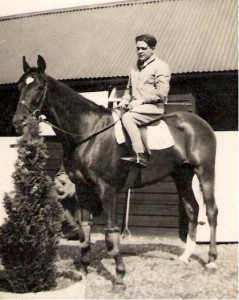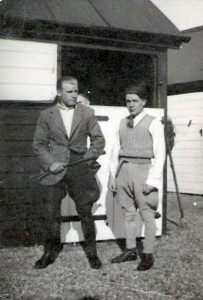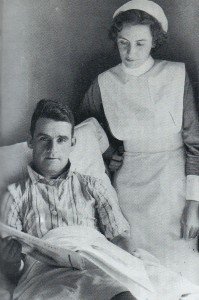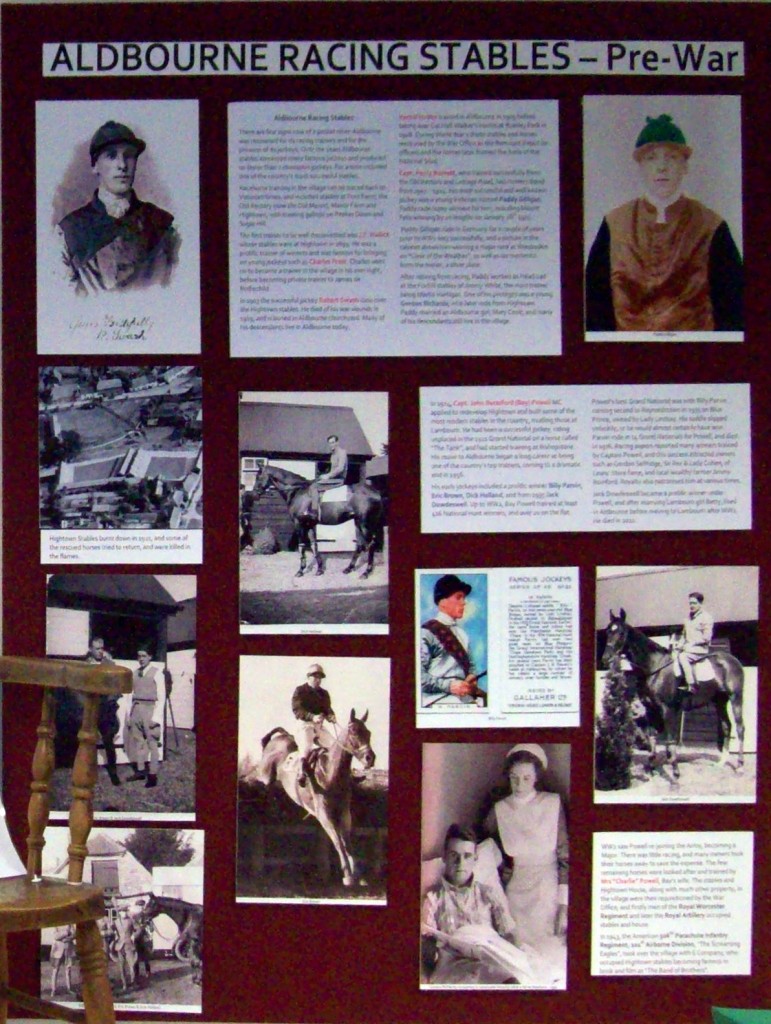Aldbourne Racing Stables


Aldbourne has long been a very industrious village. Many of its industries are well documented and well known locally. However, there is one industry that for a short period of time was so successful that it was talked about right across the country and graced by royalty.
Today very few people are aware that Aldbourne stables produced no less than 2 champion jockeys and employed the services of many more, and for a time included one of the most successful stables in the whole country.
There are 2 distinct periods in the Stables’ fortunes – before and after the Second World War.
The origin of racehorse training in the village can be traced to Victorian times, and includes stables at Ford Farm, the Old Rectory (the Old Manor), Manor Farm and Hightown, with training gallops on Peakes Down and Sugar Hill.
The first trainer to be well documented was J.F. Hallick whose stables were at Hightown in 1899. He was a prolific trainer of winners and was famous for bringing on young jockeys such as Charles Pratt. Charles went on to become a trainer in the village in his own right, before becoming private trainer to James de Rothschild.
In 1903 the successful jockey Robert Swash took over the Hightown stables. He died of his war wounds in 1919, and is buried in Aldbourne churchyard. Many of his descendants live in Aldbourne today.


Vernal Hobbs trained in Aldbourne in 1905 before taking over Col Hall-Walker’s horses at Russley Park in 1908. During World War 1 those stables and horses were used by the War Office as the Remount Depot for officers and the horses later formed the basis of the National Stud.
Capt. Percy Barnett, who trained successfully from the Old Rectory and Lottage Road, had runners listed from 1907 – 1924. His most successful and well known jockey was a young Irishman named Paddy Gilligan. Paddy rode many winners for him, including Mount Felix winning by 20 lengths on January 26th 1914.

Paddy Gilligan rode in Germany for a couple of years prior to WW1 very successfully. A picture in a nearby display case shows him winning a major race at Wiesbaden on Clerk of the Weather and his memento from the owner, a silver plate, is also displayed there.
After retiring from competitive racing, Paddy worked as Head Lad at the Foxhill stables of Jimmy White, the main trainer being Martin Hartigan. One of his protégés was a young Gordon Richards, who later rode from Hightown. Paddy married an Aldbourne girl, Mary Cook, and they lived at Marlborough House He died in 1946. Many of his descendants live in Aldbourne today.


Hightown Stables burnt down in 1921, and some of the rescued horses tried to return, and were killed in the flames.
In 1924, Capt. John Beresford (Bay) Powell MC applied to redevelop Hightown and built some of the most modern stables in the country, rivaling those at Lambourn. He had been a successful jockey, riding unplaced in the 1921 Grand National on a horse called The Tank, and had started training at Bishopstone. His move to Aldbourne began a long career as being one of the country’s top trainers, coming to a dramatic end in 1956.
His early jockeys included a prolific winner Billy Parvin (see card on display), Eric Brown, Dick Holland, and from 1935 Jack Dowdeswell. Up to WW2, Bay Powell trained at least 416 National Hunt winners, and over 20 on the flat.

Powell’s best Grand National was with Billy Parvin coming second to Reynoldstown in 1935 on Blue Prince, owned by Lady Lindsay. His saddle slipped unluckily, or he would almost certainly have won. Parvin rode in 14 Grand Nationals for Powell, and died in 1976. Racing papers reported many winners trained by Captain Powell, and this success attracted owners such as Gordon Selfridge, Sir Rex & Lady Cohen, of Lewis’ Store fame, and local wealthy farmer Jimmy Bomford. Royalty also patronised him at various times.
Jack Dowdeswell became a prolific winner under Powell, and after marrying Lambourn girl Betty, lived in Aldbourne before moving to Lambourn after WW2. He died in 2011.
WW2 saw Powell re-joining the Army, becoming a Major. There was little racing, and many owners took their horses away to save the expense. The few remaining horses were looked after and trained by Mrs “Charlie” Powell, Bay’s wife. The stables and Hightown House, along with much other property, in the village were then requisitioned by the War Office, and firstly men of the Royal Worcester Regiment and later the Royal Artillery occupied stables and house.
In 1943, the American 506th Parachute Infantry Regiment, 101st Airborne Division, “The Screaming Eagles”, took over the village with E Company, who occupied Hightown stables becoming famous in book and film as “The Band of Brothers”.




